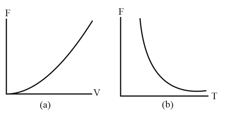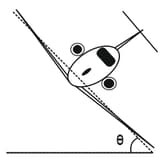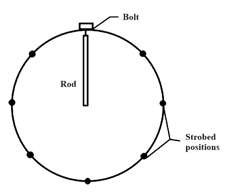A roller-coaster car has a mass of When fully loaded with passengers. As the car passes over the top of a circular hill of radius , its speed is not changing. At the top of the hill, what are the (a) magnitude and (b) direction (up or down) of the normal force on the car from the track if the car's speed is What are (c) and (d) the direction if

Important Questions on Force and Motion-II
In the figure shown below, a car is driven at constant speed over a circular hill and then into a circular valley with the same radius. At the top of the hill, the normal force on the driver from the car seat is . The driver's mass is . What is the magnitude of the normal force on the driver from the seat when the car passes through the bottom of the valley?

An passenger is made to move along a circular path of radius in uniform circular motion. (a) Figure (a) is a plot of the required magnitude of the net centripetal force for a range of possible values of the passenger's speed . What is the plot's slope at ? (b) Figure (b) is a plot of for a range of possible values of , the period of the motion. What is the plot's slope at ?

An airplane is flying in a horizontal circle at a speed of (shown in figure). If its wings are tilted at angle to the horizontal, what is the radius of the circle in which the plane is flying? Assume that, the required force is provided entirely by an "aerodynamic lift" that is perpendicular to the wing surface.

A bolt is threaded onto one end of a thin horizontal rod, and the rod is then rotated horizontally about its other end. An engineer monitors the motion by flashing a strobe lamp onto the rod and bolt, adjusting the strobe rate until the bolt appears to be in the same eight places during each full rotation of the rod (as shown in figure). The strobe rate is flashes per second; the bolt has mass and is at radius What is the magnitude of the force on the bolt from the rod?

